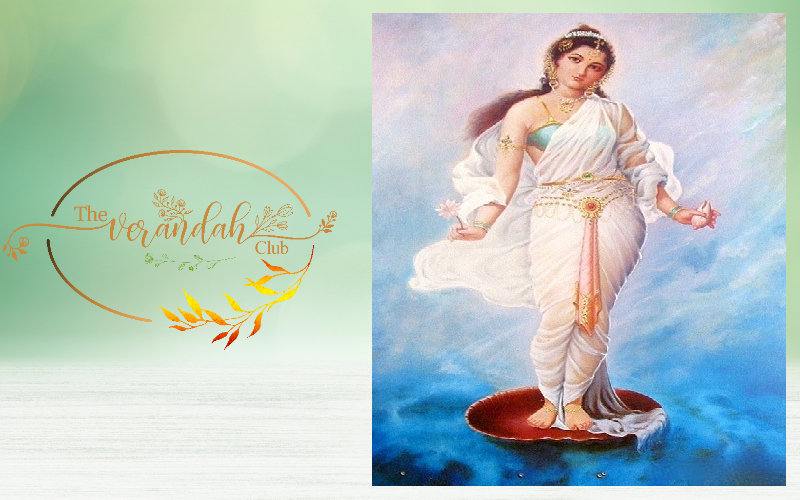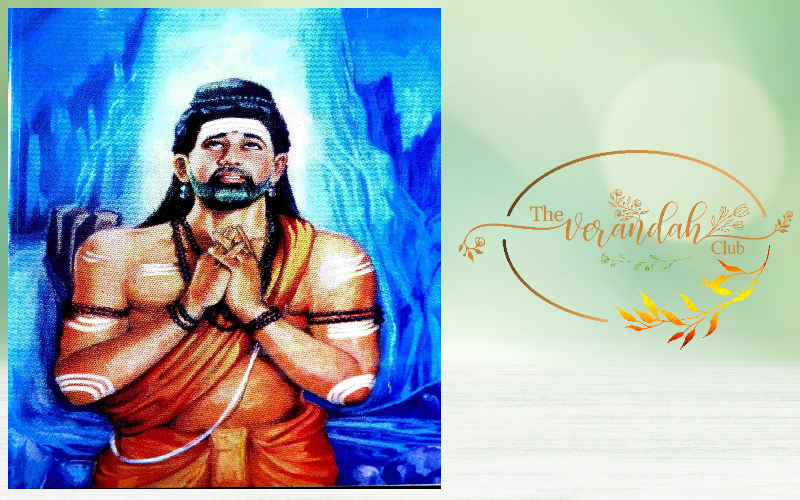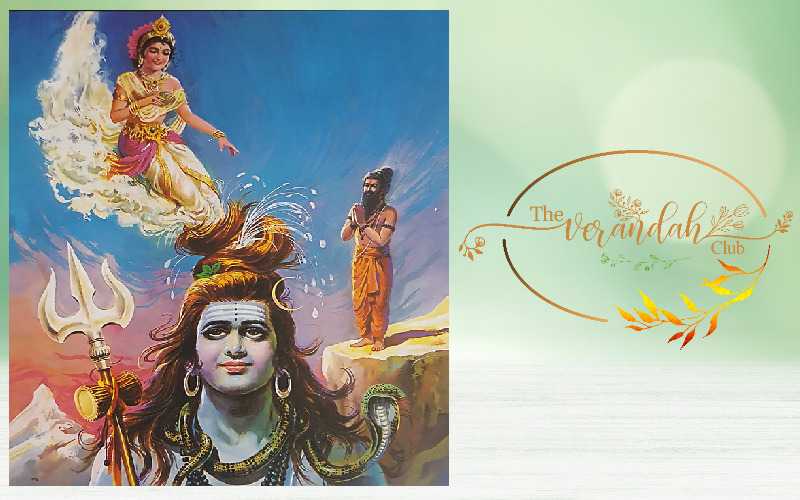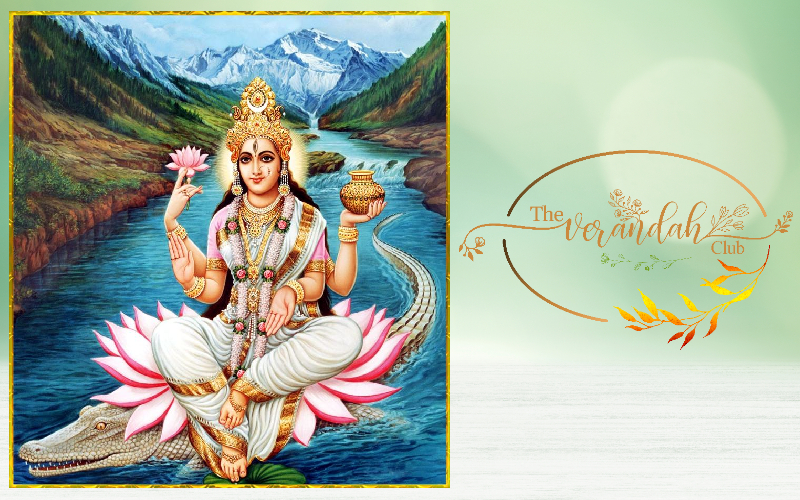The Ganga and the myth

Ganga is the biggest river in India and third largest globally in terms of discharge. It originates from the Himalayas. This mountain range is the origin for several rivers. Manasarovar and Kailash are nearby. The mythological origin of Ganga is quite interesting. The story of King Saagara and his descendent Bhaagiratha are connected with the origin of the most sacred river in the history of mankind.
King Saagara was a successful ruler. He belonged to the Solar Dynasty (Suryavanshi). He became a king simply because of the Kanyadhaan (performing the marriage of the daughter and giving her away to her husband) performed by him. He decides to pray to God in order to beget 60000 daughters. This was because Kanyadhan was one of biggest virtues in life. This information was got by Saagara from his Guru. Saagara begins his tapas (rigorous penance) to beget 60000 daughters. Here was one ruler who wanted daughters only and it is thanks to the culture which considers women to be sacred.
Indra, the Chief of the Devas gets to know about the penance of King Saagara and gets perturbed. He feels that King Saagara may replace him as the Lord of Heaven. Therefore, he requests Goddess Saraswathi, the Goddess of wisdom to help him. Thereby, she applies pressure on Saagara's tongue, and he uses the words putra (son) instead of putri (daughter). Hence Saagara received 60000 sons. Time passed by and the sons grew up into fine young men. Saagara decided to perform the Aswamedha Yajna (horse sacrifice) to gain supremacy.
A horse is normally sent to roam about and if it entered a kingdom the ruler would have to submit, failing which the army belonging to the Yajmaan (master) who is conducting the sacrifice would attack the ruler and take over the kingdom. A note would normally be fixed on the forehead of such a horse and it would be caparisoned well. Saagara's horse was followed by his 60000 sons. They are born to his wife Sumathi. Asamanja is born out of his wife Keshini. The horse loiters all around the world and reaches the aashram of Sage Kapila. This aashram is located underneath. The 60000 princes enter the underworld through a crater and they get to see the elephants supporting the Earth. They find the horse tethered to a tree in the aashram of Sage Kapila. Actually, a worried Indra had stolen the horse and left it in the aashram of the great sage who was considered to be divinity incarnate. The sons of Saagara are under the impression that it was the sage who stole the horse, and they react based on their perception. The words of the princes infuriate the sage and they just get burnt, the moment he opened his eyes. Fire emanates from their own body and they get destroyed due to the same.

Saagara mourns the loss of his 60000 sons and seeks a remedy. He is told that the waters of the heavenly Ganga would offer them salvation. Unfortunate Saagara and his immediate successor Amshuman are unable to accomplish the task. King Amshuman is the son of Asamanja and husband of Ambujakshi. Dilipa succeeds Amshuman and makes a similar vow like his father. However, he is unable to fulfil his vow. His son and successor King Bhaagiratha decides to assume his duties as the ruler of the Ikshvaku clan only after bringing the waters of Ganga and redeeming the souls of his ancestors.
Bhaagiratha had heard about the awful end of his ancestors and sought the advice of his Guru Trithala in order to redeem them from the curse of Sage Kapila. The King performed penance for a long time and Ganga told Bhaagiratha that she was ready to descend from Vishnupada but her force would cause destruction. Therefore, he was advised to obtain the favour of the blue-throated, dark-haired, Lord Shiva. Bhaagiratha did severe austerities and he got a vision of the Lord. He requests him to slow down the force of Ganga. Shiva agrees to do so. But a mischievous Ganga decides to take Shiva along her flow. Lord Shiva divines her intention and traps her in his matted locks of hair. On seeing this, a grieving Bhaagiratha performed a stern penance once again and Lord Shiva consents to release Ganga from his locks of hair.

Ganga flows little by little and she begins to follow Bhaagiratha. Since she was brought into the world by Bhaagiratha she comes to be known by the name, ‘Bhaagirathi’. The mischievous Ganga follows Bhaagiratha and in the process floods the aashram of Sage Jahnu. An infuriated Jahnu swallows her. Bhaagiratha pleads with Sage Jahnu and he releases her through his ears. Therefore she gets to be known by the name Jahnavi. Finally, Bhaagiratha leads Ganga to the spot which would help his ancestors to redeem themselves. This place is on the coast of Bengal and the waters of Ganga entered the spot. After the waters purified the aashram of Sage Kapila, the 60000 sons of Saagara got redeemed from their curse.
The name of King Bhaagiratha became immortal. He had done the impossible by not only bringing River Ganga from Vishnupada but also got his ancestors redeemed. Therefore, his name got connected with all the difficult efforts. Any tough effort is known as 'Bhaagiratha Prayatnam'. The spot where Ganga entered the aashram of Sage Kapila came to be the beginning of the ocean. The ocean earned the epithet ‘Saagara’. It was thanks to the efforts of Bhaagiratha that the ocean got to be known by the name Saagara.

Sculptures connected with the penance of Bhaagiratha and the descent of Ganga are found all over Bharat. Several paintings and musicals were created based on this lore. Several dancers have performed pieces based on the life and achievements of King Bhaagiratha, the great son of Bharat.
Bhaagiratha's selfless penance and his determination inspired many to make their efforts laudable.
(…to be continued)
Mr. Rajesh Govindarajulu is one of the founding members of the Verandah Club Pvt. Ltd. He is a leading columnist, historian, jeweler, entrepreneur, and a heritage enthusiast who is earnestly working to revive the past in the light of the present. Experiential learning about the history of Coimbatore is his main course of interest and he is also a panel member of many colleges in the city.
NEXT ARTICLE